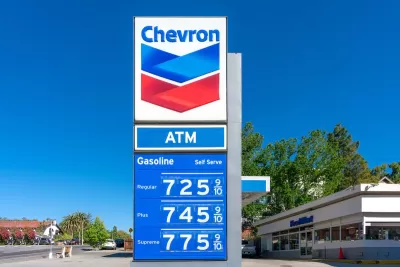Transportation costs are the second-highest household expenditure behind housing for all income levels.

The lowest-income U.S. households shoulder the biggest burden, proportionally, when it comes to transportation costs, according to a report from the U.S. Department of Transportation’s Bureau of Transportation Statistics.
Dan Zukowski outlines the findings in Smart Cities Dive, noting that “Although households with incomes of $28,261 or less spent the least on transportation overall, those expenses consumed nearly 32% of their pre-tax income.” Meanwhile, households at the higher end of the income scale (above $148,682) spent 9.6 percent of their income on transportation, though they spent more overall.
Transportation expenses were the second-largest average household cost for all income levels behind housing, and vehicle ownership and maintenance made up the largest purchases. “Average transportation costs for households in 10 U.S. cities jumped more than 41% over a 10-year period leading up to 2022-2023, according to a separate report from the New York State Comptroller in October.”
FULL STORY: Lowest-income households face highest transportation cost burden: federal report

Trump Administration Could Effectively End Housing Voucher Program
Federal officials are eyeing major cuts to the Section 8 program that helps millions of low-income households pay rent.

Planetizen Federal Action Tracker
A weekly monitor of how Trump’s orders and actions are impacting planners and planning in America.

The 120 Year Old Tiny Home Villages That Sheltered San Francisco’s Earthquake Refugees
More than a century ago, San Francisco mobilized to house thousands of residents displaced by the 1906 earthquake. Could their strategy offer a model for the present?

HSR Reaches Key Settlement in Northern California City
The state’s high-speed rail authority reached an agreement with Millbrae, a key city on the train’s proposed route to San Francisco.

Washington State Legislature Passes Parking Reform Bill
A bill that would limit parking requirements for new developments is headed to the governor’s desk.

Missouri Law Would Ban Protections for Housing Voucher Users
A state law seeks to overturn source-of-income discrimination bans passed by several Missouri cities.
Urban Design for Planners 1: Software Tools
This six-course series explores essential urban design concepts using open source software and equips planners with the tools they need to participate fully in the urban design process.
Planning for Universal Design
Learn the tools for implementing Universal Design in planning regulations.
Ada County Highway District
Clanton & Associates, Inc.
Jessamine County Fiscal Court
Institute for Housing and Urban Development Studies (IHS)
City of Grandview
Harvard GSD Executive Education
Toledo-Lucas County Plan Commissions
Salt Lake City
NYU Wagner Graduate School of Public Service





























